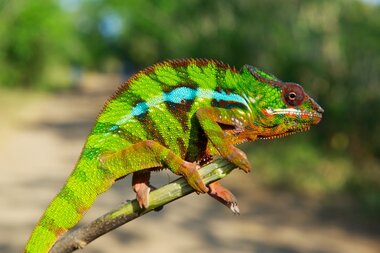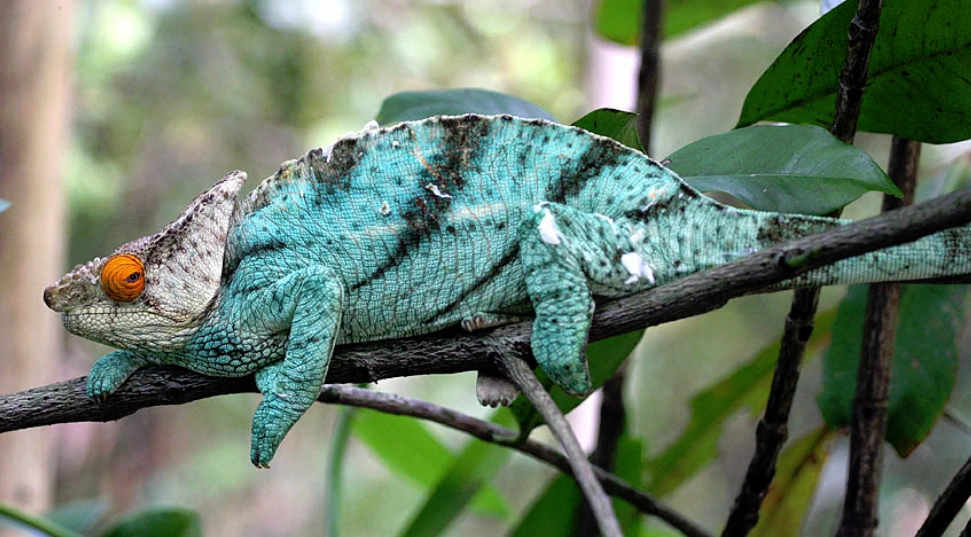Chameleons are some of the most fascinating creatures in the animal kingdom. Known for their unique ability to change color, these reptiles have captured the imagination of scientists, nature lovers, and pet owners alike. From their zany tongue abilities to their iconic swiveling eyes, there’s so much to discover about these color-shifting marvels. Let’s dive into the wild and colorful world of chameleons, exploring how they live, what makes them so unique, and why they’ve become a trendy topic among animal enthusiasts.
Fascinating Facts About Chameleons
Chameleons are a type of lizard, part of the Chamaeleonidae family, and can be found in various parts of the world, from Madagascar to parts of Africa, southern Europe, and Asia. While they’re widely known for their color-changing abilities, that’s just the tip of the iceberg when it comes to their incredible adaptations. Did you know that there are over 160 different species of chameleons, each with its own unique features and traits?
Beyond their colors, chameleons are arboreal creatures, meaning they spend much of their time in trees. They have zygodactylous feet (two toes pointing forward and two pointing back), which make them expert climbers. Their prehensile tails act as a fifth limb, giving them extra stability while navigating through branches.

How Do Chameleons Change Color? The Science Behind the Magic
Chameleons are best known for their color-changing abilities, but contrary to popular belief, they don’t change color to match their surroundings. So, how do they do it, and why?
Chromatophores and the Role of Pigment Cells
Chameleons change color thanks to specialized skin cells called chromatophores. These cells contain pigments that can be expanded or contracted to reveal different colors. Underneath the chromatophores, there are layers of iridophore cells that reflect light. By manipulating these cells, a chameleon can alter the way light reflects off its skin, allowing it to display a wide range of colors.
Environmental Triggers and Mood-Based Color Changes
While environmental factors like light and temperature can influence a chameleon’s color, mood plays a huge role. Chameleons often change color to communicate with other chameleons. For example, a male might turn a bright color to attract a mate or to intimidate rivals. On the flip side, a chameleon might darken its skin when feeling stressed or threatened.
Types of Chameleons and Their Habitats: From Madagascar to Your Home
Chameleons live in a variety of environments, from the rainforests of Madagascar to the desert regions of northern Africa. There are three main types of chameleons that are particularly popular among pet owners:

Panther Chameleons
Panther chameleons are one of the most vibrant species and are native to the island of Madagascar. Their striking colors range from bright blues and greens to reds and oranges, depending on the region they’re from. These chameleons are a favorite among pet owners due to their vivid hues and somewhat easier care requirements.
Veiled Chameleons
The Veiled Chameleon, originally from the Arabian Peninsula, is another common pet species. Veiled chameleons have a large, leaf-like structure on their head, known as a casque, which helps regulate their body temperature. They’re hardy and adaptable, making them a good choice for first-time reptile owners.
Jackson’s Chameleons
Jackson’s chameleons are recognizable for their three horn-like structures on their heads, giving them a dinosaur-like appearance. These chameleons come from the forests of East Africa and are popular due to their unique look and calm demeanor.
Chameleons in the Wild: Rainforests, Deserts, and Arboreal Habitats
In the wild, chameleons thrive in trees, where they can use their impressive climbing abilities and camouflage to hunt and hide from predators. Different species have adapted to a variety of environments, from the humid, dense rainforests of Madagascar to the drier, more arid climates of African deserts.
Caring for Pet Chameleons: What Every Owner Should Know
For those considering bringing a chameleon into their home, there’s more to these creatures than just their ability to change color. Chameleons require specific care to thrive in captivity.

Essential Supplies for Your Chameleon’s Terrarium
Chameleons are sensitive creatures that need the right environment to stay healthy. You’ll need a large terrarium with plenty of branches for climbing and basking spots. The habitat should have both UVB and heat lamps to mimic the sunlight and warmth they need. Maintaining a humid environment is also crucial, so a misting system or regular hand-misting will help keep their habitat moist.
Feeding Habits: What Do Chameleons Eat?
Chameleons are insectivores, meaning they feed primarily on insects. Crickets, mealworms, and flies are common staples in a chameleon’s diet. Some larger species will also eat small birds or lizards, while others might occasionally snack on leaves or fruit. It’s also essential to dust their food with calcium and vitamins to ensure they receive proper nutrition.
Common Health Issues in Captive Chameleons
One of the most common health issues pet chameleons face is metabolic bone disease caused by a lack of UVB light and insufficient calcium. Stress, dehydration, and respiratory infections can also affect chameleons in captivity, so it’s essential to monitor your pet closely and ensure they’re getting everything they need for a healthy life.
Why Chameleons Are Nature’s Ultimate Survivors
Chameleons have evolved incredible adaptations that make them ultimate survivors in the wild. From their sticky, fast tongues to their ability to blend into the environment, chameleons have it all.
Evolutionary Adaptations for Hunting and Defense
A chameleon’s tongue can extend to about twice its body length, helping it snatch prey from a distance with incredible speed—about 13 miles per hour! The sticky pad at the tip of the tongue grips the prey, pulling it back into the chameleon’s mouth before the insect even knows what hit it.
Chameleons are also excellent at avoiding predators. Their ability to remain perfectly still and blend into their surroundings makes them hard to spot. If threatened, some species can also make a hissing sound or inflate their bodies to appear larger and more intimidating.
How Chameleons’ Eyes Work Independently
One of the most fascinating aspects of chameleons is their eyes. They can move independently, allowing them to have a full 360-degree view of their surroundings. This gives them a huge advantage when hunting or keeping watch for predators. When they spot prey, both eyes can lock onto the target for a precise strike.
Ending FAQs
- How do chameleons change color?
Chameleons change color using specialized cells in their skin called chromatophores and iridophores, which allow them to manipulate light reflection and pigment to produce different colors. - What should I feed my pet chameleon?
A diet of insects like crickets, mealworms, and occasional treats such as flies or roaches. Dusting their food with calcium supplements is also essential. - How long do chameleons live in captivity?
Most chameleons live around 5-7 years in captivity, though some species can live longer with proper care. - Can chameleons recognize their owners?
While chameleons don’t recognize their owners in the same way mammals do, they can become accustomed to handling and may show less stress over time.
Chameleons truly are one of nature’s greatest wonders, with adaptations that make them stand out in the reptile world. Whether in the wild or as pets, these incredible creatures never cease to amaze us with their colorful personalities and survival tactics.
As Edvard Munch once said, “Nature is not only all that is visible to the eye… it also includes the inner pictures of the soul.” Chameleons, with their ever-changing colors and curious behaviors, remind us that nature is full of surprises and beauty waiting to be uncovered.
